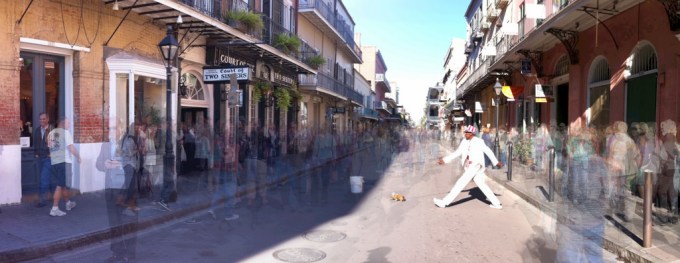With faith in government at an all-time low, it’s time for mayors, county executives and governors to do one concrete thing to make the delivery of government services better — appoint someone to lead government data efforts — a Chief Data Officer (CDO).
It’s one of the smartest investments a chief executive can make because it can pay for itself in multiple ways –- financial savings, operational efficiency, increased civic engagement, and perhaps even by providing a few reasons to restore public confidence in government.
Most governments already have pockets of data-driven activity, which are often unconnected and inconsistent across departments. A CDO can play the role of a maestro to the existing band of data analysts in government, and can also provide the vision and intellectual leadership needed to take data efforts from haphazard to superb.
The cost of one person’s salary can easily repay itself with the efficiencies achieved through analytics. For example, when Mayor Mitch Landrieu of New Orleans hired a leader for his data operation, the city cut blight by 15,000 units, significantly improving the city’s tax base. And, during this process, the analytics team also cut inspection time in half while inviting civic participation in blight reduction with an app that allowed the public to flag properties at risk.
Mayor Landrieu, speaking of his analytics leader Oliver Wise, said, “Oliver not only helps find innovative, data-driven solutions that make government more efficient and more effective, he also tracks the city’s progress to hold us accountable to the people of New Orleans on everything from potholes to blight to crime.”

New Orleans street scene. Photo courtesy of Flickr/ Jeff Turner.
Operational efficiencies are one of the key accomplishments of the analytics efforts in other pioneering cities.
Chicago is using analytics to prevent foodborne illness with its data model that finds critical health code violations that can make people sick, on average, seven days earlier than with the traditional inspection procedure. They’ve also made their rodent abatement program 20% more efficient using data analytics.
The New York City analytics team has worked with city agencies to use data to improve processes ranging from faster 911 call responses to a streamlined process for entrepreneurs opening new businesses. They are also using data to protect tenants from harassment and discrimination and to improve building safety inspections.
In Boston, the analytics team is taking on tough and visible public policy challenges like addiction, homelessness and traffic congestion. The analytics team has already demonstrated value with several projects, including its CityScore data snapshot of city progress, which was recently designated a Bright Idea by Harvard’s Innovations in American Government program. A recent data visualization
A recent data visualization tool helps firefighters avoid hazards when responding to a call by integrating data across seven city departments, including code inspections, hazardous materials and the like.
The city worked with Waze to get data that helps improve traffic flow. In one example, targeting police enforcement against double parking in areas with greater congestion enabled one neighborhood to see an 18% drop in traffic jams while another had a 20% reduction in delays.
According to Boston Chief Data Officer Andrew Therriault, “City governments have a direct impact on the lives of their residents every day, in areas ranging from the mundane (providing essential services such as trash pick-up and road repair) to the life-changing (combating problems such as substance abuse, homelessness, and sex trafficking).

John W. Weeks Bridge and clock tower over Charles River by Harvard University in Boston.
It’s essential that cities use data and analytics to maximize the good that they do, by helping them to spend their limited resources more efficiently and effectively. A dedicated analytics program –led by an experienced Chief Data Officer — will pay for itself many times over in the cost savings it identifies and the new and improved services it can help a city to provide.”
A study of large corporations found that the ones, “with the most advanced analytics capabilities are outperforming competitors by wide margins.” The same is true in government, even if it’s harder to measure.
Rather than driving shareholder value, analytics in government provide insight that can deliver public services better and faster, and, in some cases, literally save lives with data. New Orleans used data to make its smoke alarm program more effective, and 11 people, including a baby, were saved from a burning building because of the alarm they got through this data-driven program.
These CDOs and others have come together to create a network, the Civic Analytics Network, led by Stephen Goldsmith, the Daniel Paul Professor and Director of the Innovations in American Government Program at the Ash Center at Harvard University. The purpose of the network is to support CDOs in collaborative efforts to improve and share their work to advance data-driven government.

An analytics team can do more than a single analytics leader can accomplish alone, but one analytics person is better than none. In fact, while most analytics teams in the Civic Analytics Network that have been in place for more than two years have a team, several of the newer offices continue to achieve success with a staff of just one. Among analytics offices in the Civic Analytics Network, 68% have fewer than 10 employees, 42% have four or fewer employees and 16% have a single analytics staff person.
Many of the city data leaders are new to their jobs – one-third of analytics leaders in the network were named in the last year, and two-thirds were named in the last three years.
Chief Data Officers in government are typically working for salaries far less than their talents would command in the private sector, most of them because they want to make a difference. Said Therriault, “What gets me going every day is not just to make money, but to help people make a positive impact on people’s’ lives. “ Some CDOs may spend their career in government while others may serve for a time and then move on to other challenges.
Either way, this is a field ripe for creative and entrepreneurial urban data pioneers. If I were a mayor or governor, I would make it a priority to hire a CDO, and I’d give him or her the resources to make a difference and a clear mandate of support. The results are likely to be not just more data-driven and rational government, but also perhaps some reason for the hope that public opinion of government will improve accordingly.
